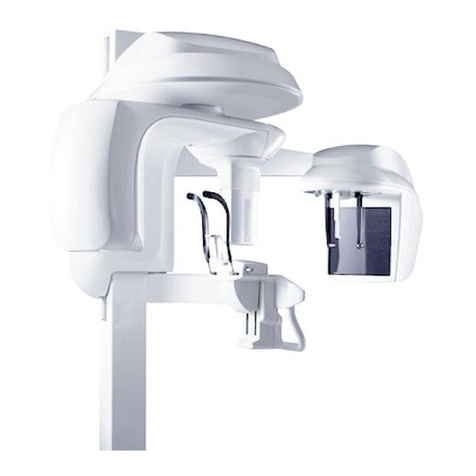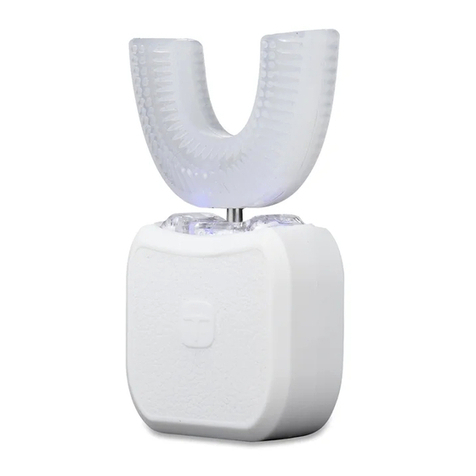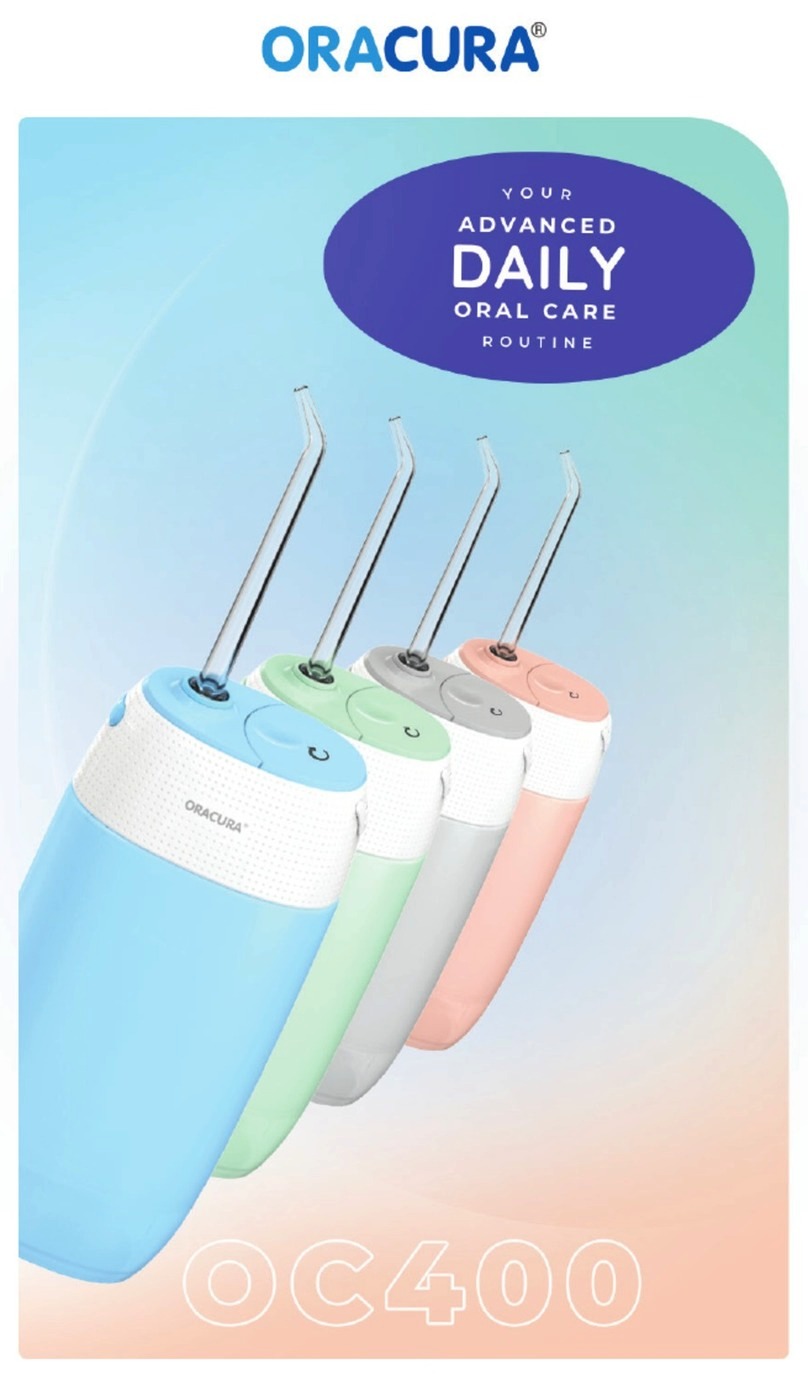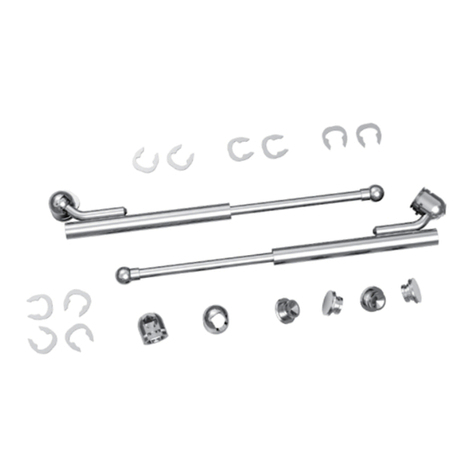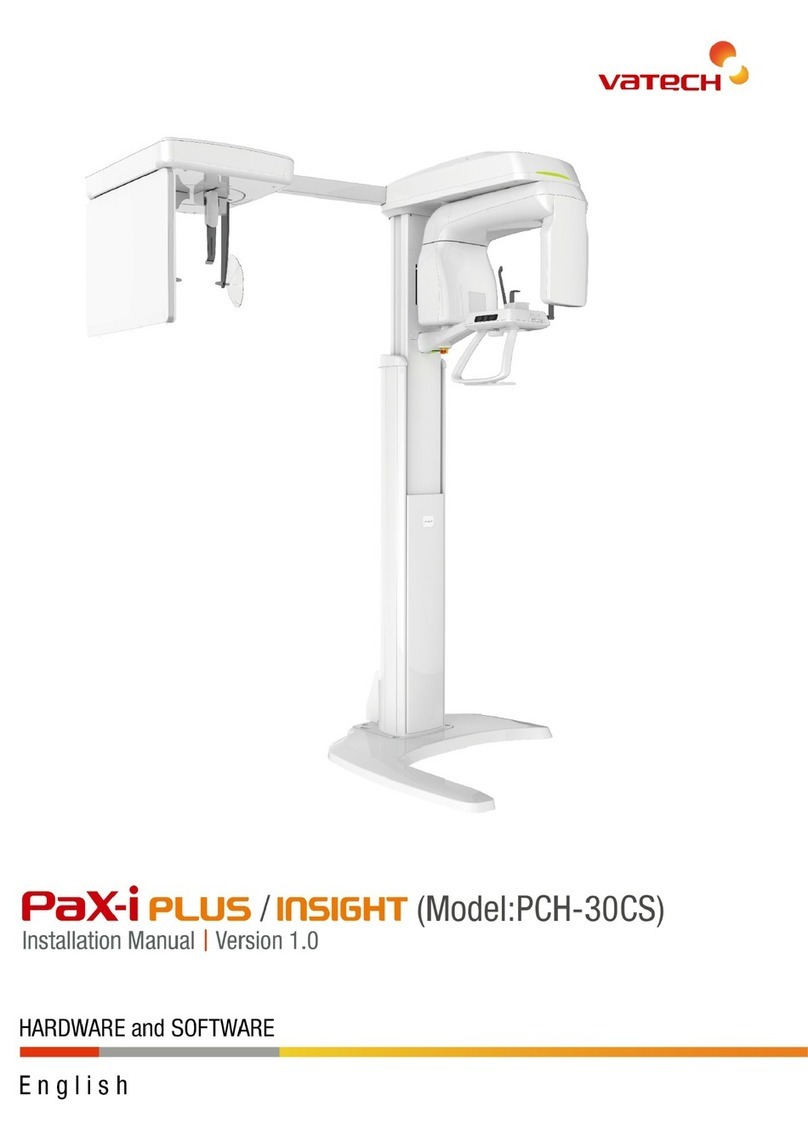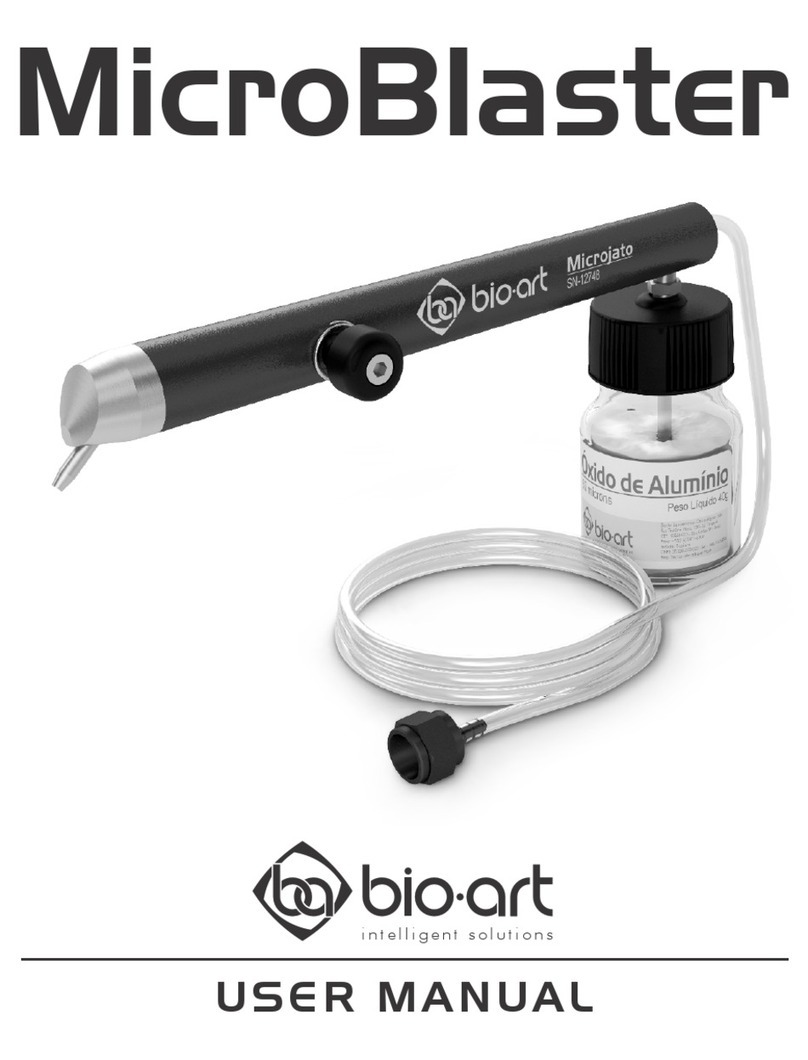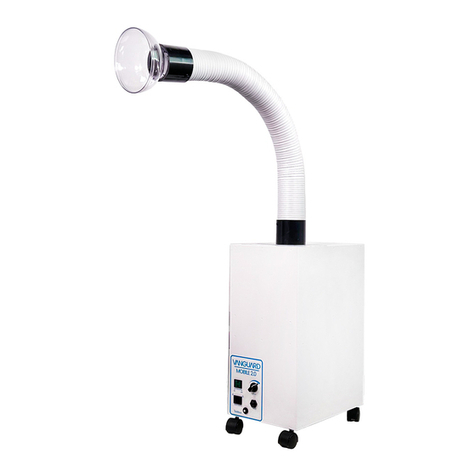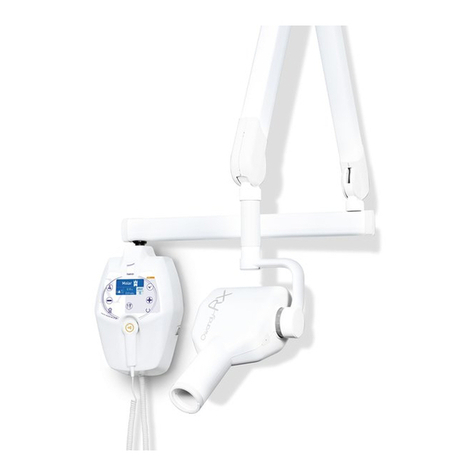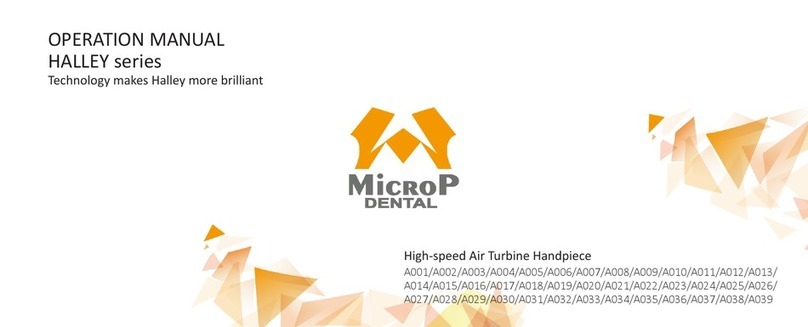henke sass wolf HENKE-DENT 300 A Trio User manual

Gebrauchsanweisung HSW HENKE-DENT 300 A / E Trio –8300052820-09-19
Seite 1
HENKE-SASS, WOLF GMBH
Keltenstraße 1 - D-78532 Tuttlingen
Gebrauchsanweisung
HSW HENKE-DENT 300 A Trio
HSW HENKE-DENT 300 E Trio
Zweckbestimmung: Dentale Injektionsspritze mit Aspirationsfunktion für die Infiltrations- und Leitungsanästhesie.
Diese Injektionsspritze mit Aspirationsfunktion wird zusammen mit einer sterilen Dentalnadel und einer
mit Anästhetikum vorgefüllten Zylinderampulle speziell in der Zahnmedizin verwendet, vorrangig zur
örtlichen Betäubung (beides nicht im Lieferumfang enthalten).
Aufbau: HSW HENKE-DENT 300 A Trio (Messing verchromt)
HSW HENKE-DENT 300 E Trio (Edelstahl)
Die HSW HENKE-DENT 300 A / E Trio ist eine nicht-zerlegbare Injektionsspritze.
Aufbereitung
Vor der ersten und jeder weiteren Anwendung muss die Spritze aufbereitet werden (Spritzen werden sauber und nicht-steril
geliefert):
Vorbereitung am
Einsatzort:
Direkt nach der Anwendung groben Schmutz von den Instrumenten entfernen. Keine fixierende Mittel
oder heißes Wasser (>40°C) benutzen, da das zur Fixierung von Rückständen führt und den
Reinigungserfolg beeinflussen kann.
Transport:
Eine sichere Lagerung und ein entsprechender Transport in einem geschlossenen Behälter werden
empfohlen, um Schäden am Medizinprodukt zu vermeiden und eine Kontamination der Umwelt
auszuschließen.
Manuelle Vorreinigung:
Die Medizinprodukte unter kaltem Leitungswasser mit einer weichen Mehrzweckbürste solange zu
reinigen, bis alle sichtbaren Rückstände und Verschmutzungen entfernt sind. Bei Lumen, Bohrungen
und Gewindegängen mindestens 10 s. bei einem Druck von 3,8 bar mit einer Wasserpistole spülen.
Reinigung:
Medizinprodukte in eine Siebschale auf den Einschubwagen legen und den Reinigungsprozess starten.
1. 4 min. Vorwaschen mit kaltem Wasser
2. Entleerung
3. 10 min. Vorwaschen mit 0,5% Neodisher Mediclean, Dr. Weigert (Hamburg)
4. Entleerung
5. 6 min Neutralisation mit 0,1 % Neodisher Z, Dr. Weigert (Hamburg) (>40°C)
6. Entleerung
7. 3 min spülen mit VE-Wasser (< 40°C)
8. Entleerung
Desinfektion:
Die maschinelle Thermische Desinfektion unter Berücksichtigung der nationalen Anforderungen
bezüglich des A0-Wertes (siehe ISO 15883) durchführen.
Trocknung:
Die Trocknung der Außenseiten der Medizinprodukte erfolgt durch den Trocknungszyklus des
Reinigungs- / Desinfektionsgerätes.
Eine zusätzliche manuelle Trocknung kann mit Hilfe eines flusenfreien Tuches erreicht werden.
Hohlräume von Medizinprodukten sind mit steriler Druckluft zu trocknen.
Kanülenansatz metrisch
Fingerring
Fingerstütze
Ampullenhalter
Kolbenstange
Aspirationshäkchen
Rändelschraube

Gebrauchsanweisung HSW HENKE-DENT 300 A / E Trio –8300052820-09-19
Seite 2
Funktionsprüfung,
Instandhaltung:
Anschließend muss eine optische Begutachtung auf Sauberkeit durchgeführt werden.
Die Pflege und ein Funktionstest gemäß Bedienungsanleitung schließen sich an.
Falls notwendig muss der Wiederaufbereitungsprozess wiederholt werden, bis das Medizinprodukt
optisch sauber ist.
Verpackung:
Normgerechte Verpackung der Medizinprodukte zur Sterilisation nach ISO 11607 und EN 868
Sterilisation
(Autoklavieren):
Sterilisation der Produkte mit fraktioniertem Vorvakuum - Verfahren (gem. ISO 13060 / ISO 17665) unter
Berücksichtigung der jeweiligen nationalen Anforderungen.
1. Fraktioniertes Vorvakuum (3-fach)
2. Sterilisationstemperatur von 134°C
3. Kürzeste Haltezeit: 3 min (Vollzyklus)
4. Trockenzeit: mindestens 10 min
Lagerung:
Die Lagerung der sterilisierten Medizinprodukte hat in einer trockenen, sauberen und staubfreien
Umgebung bei moderaten Temperaturen von +5°C bis +40°C zu erfolgen.
Information zur Validierung
der Aufbereitung
Die folgenden Materialien und Maschinen wurden bei der Validierung benutzt:
Reinigungsmittel: Neodisher Mediclean (alkalisch); Dr. Weigert; Hamburg
Neutralisationsmittel: Neodisher Z: Dr. Weigert; Hamburg
Reinigungs-/ Desinfektionsgerät: Miele G 7836 CD
Zusätzliche Anweisungen:
Gem. MPBetreibV ist der Anwender für die Validierung seiner Aufbereitungsprozesse verantwortlich.
Dies gilt auch falls die zuvor beschriebenen Chemikalien und Maschinen nicht zu Verfügung stehen.
Der Anwender muss sicherstellen, dass der Wiederaufbereitungsprozess, einschließlich Ressourcen,
Material und Personal, geeignet ist, die erforderlichen Ergebnisse zu erreichen.
Der Stand der Technik und nationale Gesetze verlangen das Befolgen von validierten Prozessen.
Indikation
Infiltrationsanästhesie:
Bei der Infiltrationsanästhesie wird das Lokalanästhetikum ins Gewebe des zu anästhetisierenden Zielgebiets infiltriert.
Leitungsanästhesie:
Im Unterkiefer kommt überwiegend die Leitungsanästhesie zur Anwendung. Das Lokalanästhetikum wird möglichst nah an den
Nervenstamm eingebracht und damit das ganze Versorgungsgebiet dieser Nerven betäubt.
Kontraindikation
Es gelten die Kontraindikationen des jeweils verwendeten Anästhetikums.
Hinweise
Die HSW HENKE-DENT 300 A/E Trio kann für alle genormten Glas-Zylinderampullen 1,7 ml oder 1,8 ml mit Lochstopfen verwendet
werden.
Beim Einlegen bzw. Herausnehmen der Zylinderampullen müssen die Aspirationshäkchen komplett eingefahren sein (Linksdrehung
der Rändelschraube) –wichtig zur Verhinderung einer Beschädigung der Aspirationshäkchen.
Beim Abknicken des Hinterteils der Spritze, sowie bei der Rückführung muss die Kolbenstange während der gesamten
Abknickbewegung komplett zurückgezogen werden. Ansonsten besteht die Gefahr, die Kolbenstange oder die Aspirationshäkchen
zu beschädigen.
Die vorhandenen Schrauben (Knickmechanismus 2 x und Fingerring 1 x) vor der Aufbereitung nicht lösen oder entfernen.
Um eine lange Lebensdauer des Produkts zu gewährleisten, empfehlen wir die unbedingte Beachtung unserer Gebrauchsanleitung,
sowie einer pflegsamen Behandlung und Aufbereitung.
Herstellung der Injektionsbereitschaft
1. Ziehen Sie die Kolbenstange durch Überwindung des Federwiderstands bis zum Anschlag zurück und knicken Sie das
Hinterteil der Spritze ab.
2. Legen Sie eine passende Zylinderampulle (1,7 ml oder 1,8 ml) mit dem entsprechenden Anästhetikum von hinten in den
Ampullenhalter ein. Achten Sie darauf, dass während des Einführungsvorgangs der Zylinderampulle der Ampullenkopf
nach vorne gerichtet ist.
3. Klappen Sie zum Schließen der Spritze die Ampullenhalterung wieder durch Überwindung des Federwiederstands bis zum
Anschlag zurück und knicken Sie das Hinterteil wieder zurück.
4. Drücken Sie nun die geschlossenen Aspirationshäkchen bis zum Anschlag in die eingelegte Ampulle und verbinden Sie
die Kolbenstange fest mit dem Lochstopfen. Die Verbindung wird durch Rechtsdrehen der Rändelschraube (=Ausfahren
der Häkchen) hergestellt. Sobald die Häkchen in Endstellung ausgeschwenkt sind, sichert die einrastende Arretierung die
Verbindung und eine Aspiration ist möglich.

Gebrauchsanweisung HSW HENKE-DENT 300 A / E Trio –8300052820-09-19
Seite 3
5. Führen Sie eine entsprechend den Anforderungen ausgelegte sterile dentale Injektionsnadel in den Kopf des
Ampullenhalters ein. Fixieren Sie die Injektionsnadel, in dem Sie diese auf das Gewinde des Ampullenhalters
aufschrauben. Bitte beachten Sie, dass nur Injektionskanülen mit einem metrischen Gewinde auf diese Injektionsspritzen
passen.
6. Die Injektionsbereitschaft inklusive der Aspirationsmöglichkeit ist nun hergestellt.
Ob eine korrekte Aspirationsmöglichkeit besteht, sollte die Funktion durch ein leichtes zurückziehen der Kolbenstange
getestet werden.
Zur Überprüfung, ob die Injektionsnadel korrekt montiert wurde, sollte nun durch eine leichte Vorwärtsbewegung der
Kolbenstange der Durchfluss des Anästhetikums kontrolliert werden. Ist ein reibungsloser Durchfluss des Anästhetikums
gegeben, so ist die Zylinderampullenspritze nun für die Applikation bereit.
7. Die Entnahme der Zylinderampulle erfolgt in umgekehrter Reihenfolge.
Warnhinweise:
Um Nadelstiche zu vermeiden, beachten Sie bitte die nationalen und betrieblichen Vorgaben und Sicherheitshinweise.
HENKE-SASS, WOLF GmbH www.henkesasswolf.de
Keltenstraße 1 info@henkesasswolf.de
78532 Tuttlingen, Deutschland
Stand: 09.09.2019

Gebrauchsanweisung HSW HENKE-DENT 300 A / E Trio –8300052820-09-19
Seite 4
Henke-Sass, Wolf GmbH
Instruction for use
HSW HENKE-DENT 300 A Trio
HSW HENKE-DENT 300 E Trio
Intended use: Dental cartridge syringe for infiltration- and block anaesthesia.
This syringe with aspiration function is used together with a sterile dental needle and a cartridge,
prefilled with an anaesthetic, primarily for local anaesthesia especially in dentistry (both are not
included in scope of delivery).
Assembly of: HSW HENKE-DENT 300 A Trio (chromed brass)
HSW HENKE-DENT 300 E Trio (stainless steel)
The HSW HENKE-DENT 300 A / E Trio is a non-detachable injection syringe.
Cleaning & Sterilisation
Prior to the initial use of the product and for each further use the product must be cleaned and sterilized (Syringes will be
delivered clean and non-sterilized):
Preparations at the place
of installation:
Remove obvious dirt particles from medical devices immediately after utilization. It is not allowed to use
fused agents or hot water (> 40°C) for cleaning as these agents lock residues and impede an effective
purification process.
Transport:
Secure storage as well as secure transport in closed boxes is recommended in order to avoid any
damage to the medical device as well as environmental contamination.
Manual pre-cleaning:
The medical device must be cleaned by means of a soft multi-purpose brush and cold tap water until all
obvious residues and defilements are removed. Lumen, drill holes and thread turns must be flushed for
at least 10 seconds at a pressure of 3.8 bars by means of a water pistol.
Cleaning
Medical devices must be put in a screen basin on the plug-in mode. Then start the cleaning process.
1. 4 minutes pre-washing by means of cold water
2. Draining
3. 10 minutes pre-washing with 0,5% Neodisher Mediclean, Dr. Weigert (Hamburg)
4. Draining
5. 6 minutes neutralization with 0,1 % Neodisher Z, Dr. Weigert (Hamburg) (> 40°C)
6. Draining
7. 3 minutes flushing with VE-water (< 40°C)
8. Draining
Desinfection:
The automatic thermal disinfection must be carried out according to the national requirements regarding
the A0-coefficient (see ISO 15883).
Needle connector
Metric-thread
Thumb ring
Fingerrest
Cartridge holder
Piston rod
Aspiration hooks
Knurled screw

Gebrauchsanweisung HSW HENKE-DENT 300 A / E Trio –8300052820-09-19
Seite 5
Drying:
Drying of the exterior parts of medical devices by means of the drying cycle of the cleaning / disinfection
equipment.
Additional manual drying is possible by means of a lint-free cloth. Hollow space of medical devices must
be dried by means of sterile compressed air.
Functional test,
maintenance
Afterwards, a visual appraisal regarding purity is necessary. The maintenance and functional tests must
be carried out according to the instruction manual.
If necessary, the reprocessing procedure must be re-run until the medical device is obviously clean.
Packaging
Packaging of medical devices for sterilization must comply with standards according to ISO 11607 and
EN 868.
Sterilization (autoclaving):
Sterilization of products by means of the fractionated pre - vacuum method (according to ISO 13060 /
ISO 17665) in compliance with the individual national requirements.
5. Fractionated pre - vacuum method (3-fold)
6. Sterilization temperature of 134°C
7. Minimum exposure time: 3 minutes (full cycle)
8. Drying time: at least 10 minutes
Storage:
Storage of sterilized medical devices must be carried out in a dry, clean and dust-free environment at a
moderate temperature of 5°C - 40°C.
Information on validation
of processing:
The following materials and machines have been used for validation:
Cleaning supplies: Neodisher Mediclean (alkaline); Dr. Weigert; Hamburg
Neutralzation supplies: Neodisher Z; Dr.Weigert; Hamburg
Cleaning / disinfection equipment: Miele G 7836 CD
Additional instructions:
According to the Ordinance on Installation, Operation and Use of Medical Devices (MPBetreibV in
German), the operator is responsible for validating any reprocessing procedures, even if the above
described chemicals and machines are not available.
The operator must ensure that any reprocessing procedures –including resources, material and staff -
are capable of achieving the required results.
National legislation as well as the state of technology requires compliance with validated procedures.
Application
Infiltration anaesthesia:
In infiltration anaesthesia, the local anaesthetic is infiltrated into the tissue of the target area to be anaesthetised.
Block anaesthesia:
In the lower jaw, mainly block anaesthesia is used. The local anaesthetic is inserted as near as possible to the nerve trunk and the
entire supply area of these nerves is anaesthetised.
Contra indication:
The contra indications of the anaesthetic used in each case apply.
Details
The HSE-DENT 300 A/E Trio can be used for all standardized glass-cylinder cartridges 1,7 ml or 1,8 ml with hole plugs.
When inserting or removing the cylinder cartridges, the aspiration hooks must be completely retracted (left-hand rotation of the
knurled screw) - important to prevent damages to the aspiration hooks.
When angulating of the rear part of the syringe, as well as during the return, the piston rod must be completely retracted during the
entire angulating procedure. Otherwise, there is a risk of damaging the piston rod or the aspirating hooks.
Do not unfix or remove the existing screws (angulating mechanism 2 x and fingerrest 1 x) before reprocessing.
In order to ensure a long lifetime of the product, we recommend the strictly observe of our instructions for use, as well as careful
handling and preparation.

Gebrauchsanweisung HSW HENKE-DENT 300 A / E Trio –8300052820-09-19
Seite 6
Preparation of device
8. Pull the plunger rod back to the stop by overcoming the spring resistance and angulate the rear part of the syringe.
9. Insert a suitable cartridge (1,7 ml or 1,8 ml) with the appropriate anaesthetic from behind into the cartridge holder.
Make sure that the head of the cartridge is facing forward during the procedure of inserting the cartridge.
10. To close the syringe, fold the cartridge holder back to the stop by overcoming the spring resistance and angulate the rear
part back again.
11. Now press the closed aspiration hooks up to the stop into the inserted cartridge and solidly connect the piston rod with the
hole plug. The connection is made by right hand rotation of the knurled screw (=extending of the hooks). As soon as the
hooks are swung out in the end position, the locking arrest secures the connection and aspiration is possible.
12. Insert a sterile dental injection needle, according to the requirements, into the head of the cartridge holder. Fix the injection
needle by screwing it onto the thread of the cartridge holder. Please note that only injection needles with a metric thread
will fit on these syringes.
13. The possibility of injection including the possibility of aspiration is constructed now.
If a correct aspiration possibility exists, the function should be tested by slightly pulling back the piston rod.
To check whether the injection needle is correctly mounted, the flow of the anaesthetic should be checked by a slight
forward movement of the plunger.
If there is a smooth flow of the anesthetic, the dental cartridge syringe is now ready for application.
14. The removal of the cartridge occurs in reverse order.
Warning notices:
To avoid needle stick, please pay attention to the national and internal specifications and safety instructions.
HENKE-SASS, WOLF GmbH www.henkesasswolf.de
Keltenstraße 1 info@henkesasswolf.de
78532 Tuttlingen, Germany
Stand: 09.09.2019
This manual suits for next models
1
Table of contents
Languages:
Popular Dental Equipment manuals by other brands
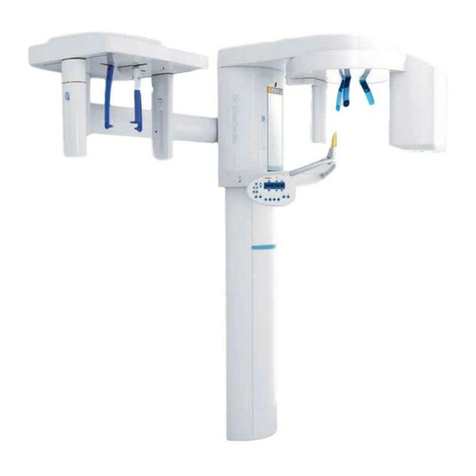
Sirona
Sirona ORTHOPHOS XG 5 installation instructions
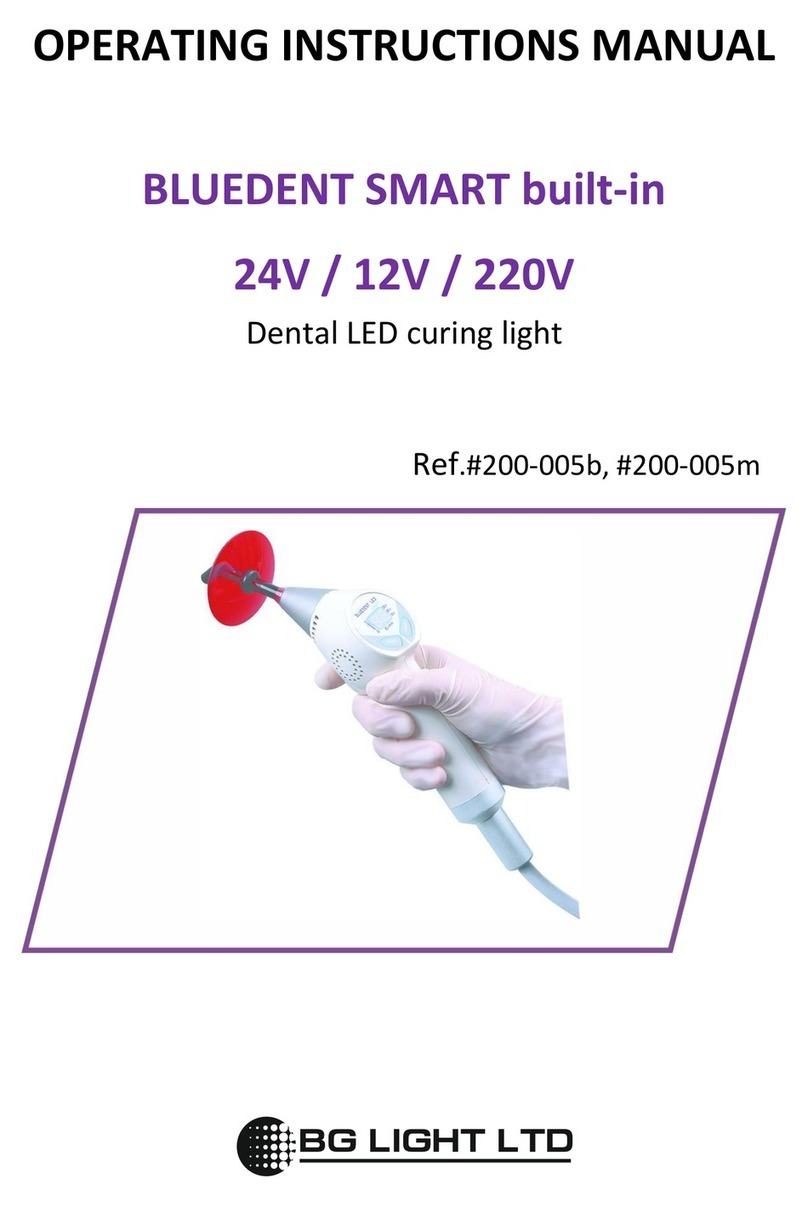
BG Light
BG Light BLUEDENT SMART cordless Operating instructions manual
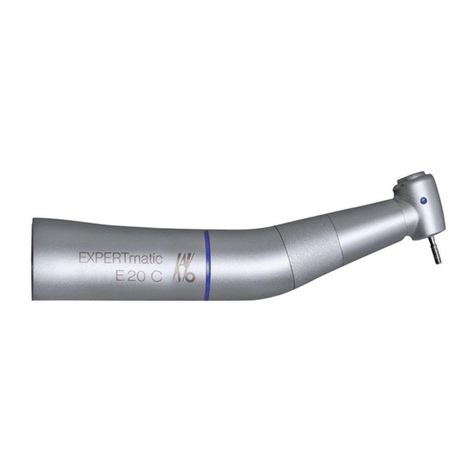
KaVo
KaVo INTRAcompact 2068 CHC Instructions for use

DKL
DKL L2-ECOair operating instructions
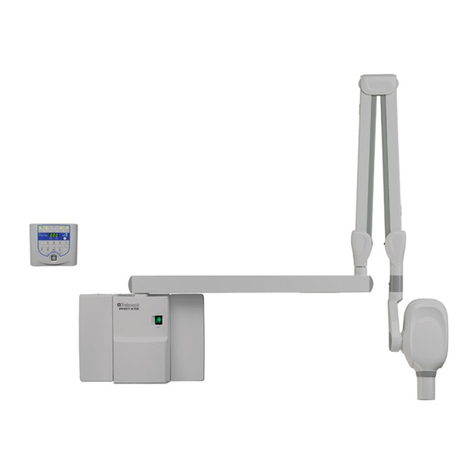
Belmont
Belmont PHOT-XIIS 505 Operator instructions
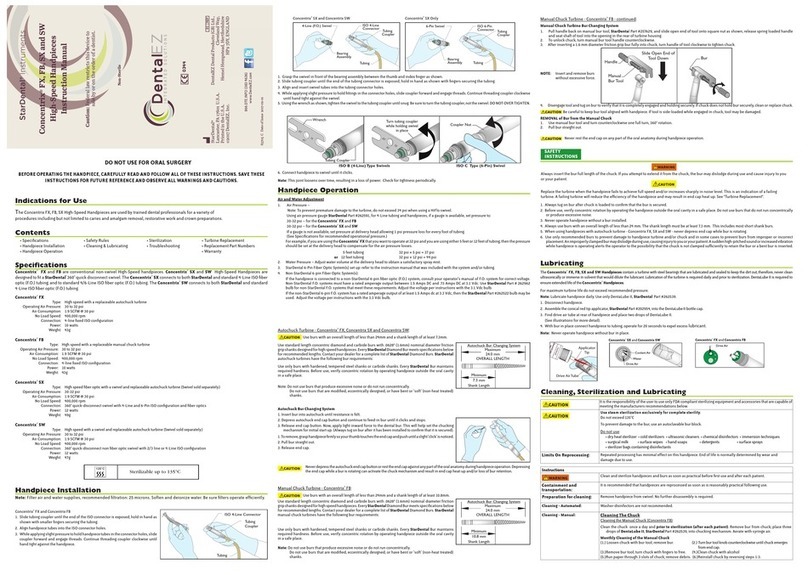
DentalEZ
DentalEZ StarDental Concentrix FX instruction manual
